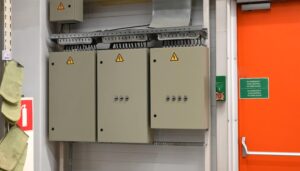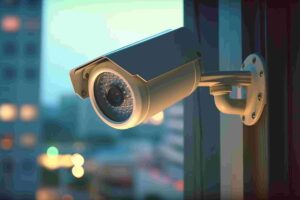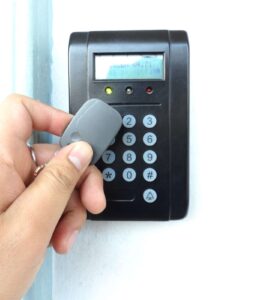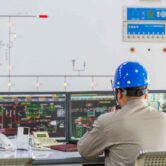
Introduction
In today’s world of smart buildings and connected infrastructure, safety, communication, and automation are becoming essential. Behind all these functions lies one silent system that powers them all — the ELV System.
If you’ve ever wondered what ELV stands for, how it works, or why it’s used in almost every modern building, this guide covers everything in simple terms.
What Is ELV systems? – Full Form and Meaning
The full form of ELV is Extra-Low Voltage.
An ELV system refers to any electrical network that operates at a voltage level low enough to ensure maximum safety from electric shock. Typically, ELV systems operate below 50 volts AC or 120 volts DC.
These systems are not used to power heavy machinery or lighting. Instead, they carry data, signals, and control commands that support building operations such as surveillance, fire safety, communication, and automation.
In short, ELV = safe, low-voltage systems for control and communication within buildings.
Purpose of an ELV System
The main purpose of an ELV system is to support essential building services safely and efficiently.
These systems handle all the “intelligent” and “connected” operations inside a facility.
Key Purposes:
Safety: Fire detection, alarms, and emergency communication.
Security: CCTV monitoring, access control, and intrusion prevention.
Communication: Data networks, intercoms, and public address systems.
Automation: Integration of lighting, HVAC, and energy management systems.
Efficiency: Lower power usage and easier maintenance compared to high-voltage circuits.
In essence, ELV systems form the digital nervous system of a modern building.
Examples of ELV Systems
ELV systems include a wide range of low-voltage technologies that make buildings smarter, safer, and more efficient. Below are the most common types found in modern infrastructure projects.
1. CCTV Surveillance System

A CCTV surveillance system is one of the most essential ELV solutions used for building security and monitoring. It uses IP cameras, network video recorders (NVRs), and video analytics to record and analyze activities in real-time, ensuring continuous safety and control across all areas of a facility.
2. Fire Alarm System

The fire alarm system is designed to provide early warning and help in quick evacuation during fire emergencies. It consists of smoke and heat detectors, alarm sounders, and control panels that detect fire incidents instantly and alert occupants, minimizing damage and risk to life.
3. Access Control System
Access control systems ensure restricted and secure entry to authorized personnel only. They use devices like RFID card readers, biometric scanners, or smart locks to manage access points, protect sensitive areas, and maintain complete records of entry and exit activity.

4. Public Address (PA) System
A PA system enables effective communication and announcements within a building or campus. Through a network of amplifiers, microphones, and speakers, it allows administrators to make emergency alerts, general announcements, or play background music in public spaces.
5. Data and Voice Network
This system forms the IT backbone of any organization, providing connectivity for communication and data transfer. It uses structured cabling, switches, routers, and patch panels to ensure reliable network communication between devices, offices, and servers.
6. Building Management System (BMS)

The Building Management System integrates multiple building functions such as HVAC, lighting, and energy management under a single control platform. It improves operational efficiency, reduces energy costs, and enables automated monitoring for better sustainability.
7. Parking and Gate Control System

Parking and gate control systems manage vehicle movement and access within premises. They use sensors, automatic barriers, and ticketing or RFID systems to streamline parking operations, enhance security, and provide convenience to both visitors and staff.
How an ELV System Works
ELV systems work through a combination of sensors, controllers, and communication lines.
Here’s a simplified breakdown of the process:
Input Layer (Sensors):
Devices such as smoke detectors, motion sensors, or access readers collect data from their surroundings.
Processing Layer (Control Panels):
The signals from sensors are sent to a control unit — for example, a fire alarm panel or access control server — where they are analyzed.
Output Layer (Action Devices):
Based on the input, the system triggers appropriate actions like sounding an alarm, unlocking a door, or sending alerts to security personnel.
Communication Network:
All these systems communicate over structured cabling or wireless networks, often using IP technology, enabling remote monitoring and centralized management.
Integration:
Modern ELV systems are interconnected through a Building Management System (BMS), allowing all subsystems — from fire alarms to lighting — to work together intelligently.
Benefits of ELV Systems
- Enhanced Safety: Operates at voltages safe for humans and equipment.
- Energy Efficiency: Consumes minimal power, reducing operational costs.
- Easy Maintenance: Modular setup simplifies troubleshooting and expansion.
- Smart Integration: Compatible with IoT and smart building technologies.
- Scalability: Additional devices or systems can be integrated easily.
Applications of ELV Systems
ELV systems are widely used across industries and facilities such as:
- Commercial and office buildings
- Hospitals and educational institutions
- Hotels and malls
- Airports and data centers
- Residential complexes and smart homes
Wherever there’s a need for security, communication, and automation, ELV systems play a vital role.
Conclusion
ELV systems are the backbone of modern building intelligence. From fire safety to seamless communication, they ensure that environments are secure, efficient, and future-ready. Whether you’re designing, installing, or marketing ELV solutions, understanding their purpose and functionality is key to delivering value.






